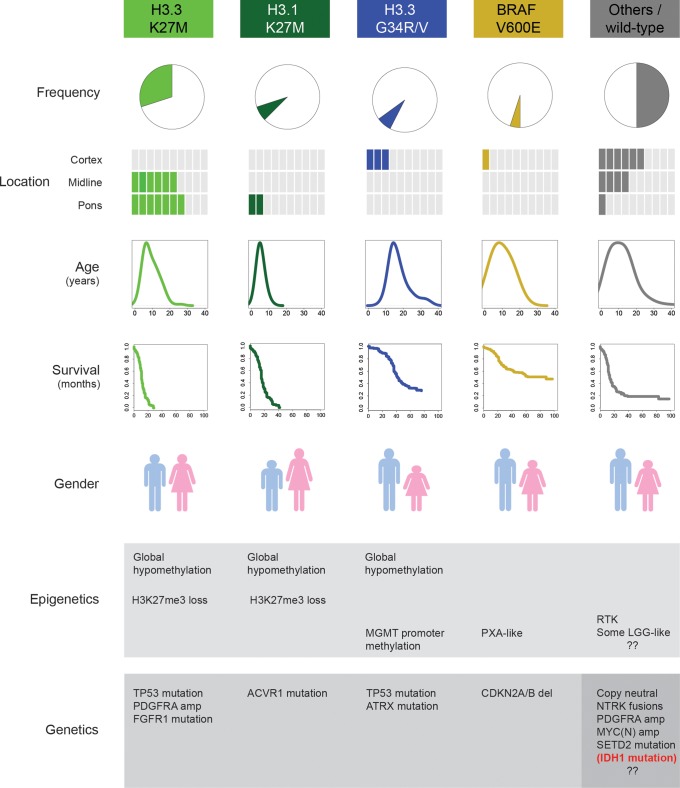Fig. 1.
Biologically and clinically defined subgroups of pediatric infiltrating glioma. Specific, selective, recurrent, and mutually exclusive mutations in the genes encoding the histone H3.3 (H3F3A) and H3.1 (HIST1H3B, HIST1H3C) variants, along with BRAF V600E, mark distinct subgroups of disease in children and young adults. There are clear differences in location, age at presentation, clinical outcome, gender distribution, predominant histology and concurrent epigenetic and genetic alterations. The remaining half of tumors comprising these diseases harbor numerous, partially overlapping putative drivers or other (epi)genomic characteristics, but as yet do not form well-validated biological and clinical subgroups. The small proportion of children (mostly adolescents) with IDH1 mutations represent the lower tail of age distribution of an otherwise adult subgroup, and are excluded here.

